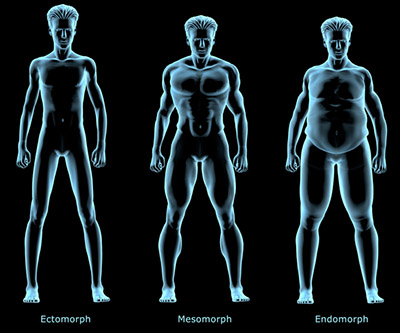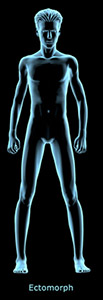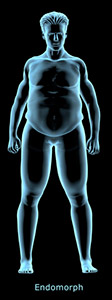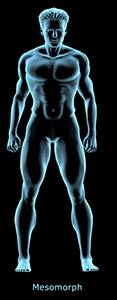Learn
Muscular Strength
You will remember that muscular strength is the maximum amount of force your muscles can exert against resistance.
Lifting weights is a great example.
Let us review the principles that apply to muscular strength training.
- Muscles must work through a greater resistance than normal, daily resistance. This means lifting heavier weights than what you lift in a normal day.
- Gradually overload muscles during training. Work up to higher and higher weight amounts. Try to increase the amount of weight, even if 1 or 2 pounds, at each workout.
- Target muscles you want to improve (arms, chest, legs)
- Allow muscles adequate time to recover between workouts. You should normally let your muscles recover for one full day before strength training that muscle again.
Muscular Endurance
Muscular endurance refers to the ability of a muscle group to execute repeated contractions over a period of time sufficient to cause muscular fatigue. In other words, muscular endurance is the ability to maintain a specific percentage of the maximum voluntary contraction for a prolonged period of time.
Station/Circuit Training is a great example.
Let us review the principles that apply to muscular endurance training.
- You should lift lower amounts of weights more times.
- Individuals with a high percentage of slow twitch muscle fibers will have a greater inherent physical capacity for physical endurance/stamina.
- Allow muscles adequate time to recover between workouts.
Training Differences
How you train should depend on your training goals.
If you are training for muscular strength, you should look at using a high weight and low number of repetitions. Each persons “high weight” that they can lift will vary.
If you are training for muscular endurance, you should use low weight and a high number of repetitions.
Here are some sample workouts based on different training goals.
| Training Goal | Workout |
|---|---|
| Muscular Endurance Training |
|
| Muscular Strength Training |
|
| Combination Training |
|
Body Types
In the 1940s, William H. Sheldon proposed that there are three body types:
- Ectomorph - typically thin with low levels of muscle and body fat
- Endomorph - typically large-boned and curvy
- Mesomorph - typically muscular or athletic build

Not everyone fits into one of these categories, but you can probably find one body type that is predominantly your body type. We will look at what type of workout is recommended for each body type to help you develop your own workout.
Let's look at each of these body types more closely.
Ectomorph
Physical characteristics of the ectomorph body type include:
- Narrow shoulders
- Narrow hips
- Narrow/thin face
- Narrow/thin chest
- Thin arms and legs
- Very little body fat
How a person with an ectomorph body type should train:
- Use split-training (focus on 1-2 body parts each workout).
- Train each body part once a week (example – workout arms on Monday, legs on Wednesday, and chest/core on Friday).
- Get plenty of rest between workouts.
- Change training routine once a month.
- Increase your intensity each workout (weight and reps).
- Keep reps in the 5 – 10 range.
- Focus on lifting heavier weights to increase intensity.
- Get at least 8 hours of sleep at night.
- Keep aerobic exercises to a minimum.
- Eat 5 to 7 small meals a day.

Endomorph
Physical characteristics of the endomorph body type include:
- Wide hips with narrow shoulders (pear-shape).
- Fat spread across the body
- Wide bone structure
- Gains weight easily, and does not lose fat easily.
- Body tends to store fat which can make muscle gain unnoticeable.
How a person with an endomorph body type should train:
- Needs frequent workouts that focus on cardio/aerobic exercises (at least 3 times a week).
- Each workout should be high intensity.
- Try to find 2 to 3 exercises that work every muscle group during one workout (arms, legs, chest/core).
- Focus on Circuit/Station Training. Avoid training with heavy weights.
- Change your workout program after every 3rd workout.
- Count your calories and avoid late night snacking.

Mesomorph
Physical characteristics of the mesomorph body type include:
- Broad shoulders with narrow waist
- Muscular body (especially forearms and thighs)
- Very little body fat
How a person with an endomorph body type should train:
- Responds well to muscular strength exercises for 3 to 4 weeks and then swapping to muscular endurance exercises for 3 to 4 weeks.
- Constantly keeping the body off balance by swapping up your workouts is key to getting the most results.
- Get 7 ½ to 9 hours of sleep every night.
- To maximize muscle gains, do not perform cardio/aerobic workouts more than 3 times per week.

Physical Activity
You are learning to compare muscular strength and muscular endurance workouts. Your body type helps determine the best workout for you.
Your physical activity will include a cardio activity and strength exercises. Your goal is to understand the benefits of adding muscular strength and endurance workouts to your cardio workouts so you can reap the benefits of both.
Focus on practicing the appropriate strength training techniques using the videos from your prior lessons. Also, focus on completing muscular exercises correctly so you can reap benefits and perform the exercises safely.
Through this activity, work out for 45 continuous minutes by completing a cardio warm-up for 10 minutes, then completing a 30-minute strength routine followed by a 5-minute cooldown activity.